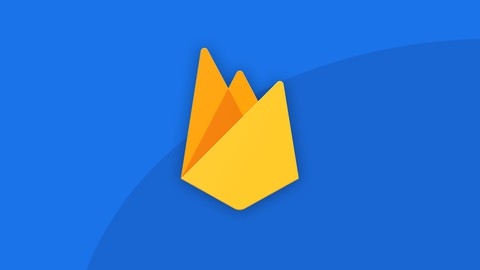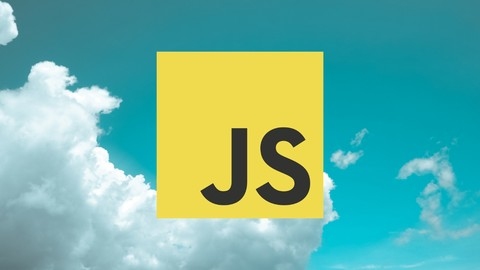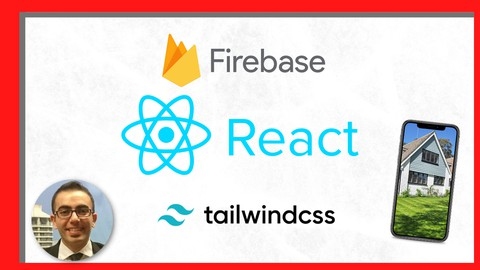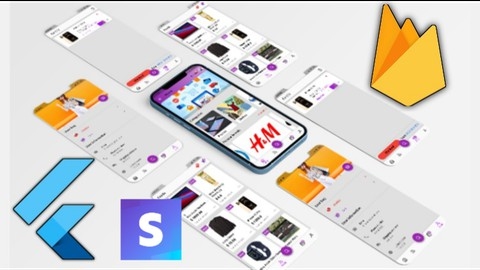If you’re looking for the best Firebase courses on Udemy, you’ve come to the right place.
Firebase is a powerful platform for building web and mobile applications, but mastering its features and tools can be a daunting task.
In this blog post, we’ll explore the top-rated Firebase courses on Udemy that will help you unlock the full potential of this versatile platform.
Build Web Apps with Vue JS 3 & Firebase
This course covers everything you need to build modern web applications with Vue.js 3 and Firebase.
You will start by learning the basics of Vue, including components, templates, data binding, events, conditional rendering, lists, and more.
The course then dives into using the Vue CLI for building larger projects, covering topics like components, props, custom events, slots, and lifecycle hooks.
Next, you’ll build your first project, a reaction timer game, to solidify your understanding of Vue fundamentals.
The course continues with forms, handling user input, data binding with forms, select fields, checkboxes, and keyboard events.
You’ll learn about routing with Vue Router, setting up routes, route parameters, navigation guards, and lazy loading components.
The course covers fetching data from APIs, including JSON Server, and building a project planner application.
One of the highlights is the introduction to the Composition API, a new way to structure components and code in Vue 3.
You’ll learn about reactivity with refs, computed values, watch and watchEffect, and using the Composition API with async code and routing.
The course extensively covers Firebase, including Firestore (the real-time database), authentication, storage for uploading images, hosting for deploying your apps, and security rules.
You’ll build several projects that integrate Vue with Firebase, such as a live chat room with authentication, a music playlist app with image uploads, and more.
Other topics covered include using Vue with Firebase 9, JavaScript concepts like modules, map/filter, spread syntax, template strings, arrow functions, fetch, promises, async/await, and more.
The course also includes a bonus section on the Vue CLI 3, covering custom presets, plugins, build targets, and the Vue GUI.
Build Web Apps with React & Firebase
You will start by learning the fundamentals of React, including components, JSX, state management with hooks like useState, and handling user input and events.
As you progress, you will dive into more advanced topics like fetching data with useEffect, creating custom hooks, routing with React Router, and implementing authentication and database integration with Firebase.
The course covers both the basics of Firebase, such as setting up projects and connecting to Firestore databases, as well as more complex features like real-time data updates, file uploads to Firebase Storage, and securing data with Firestore rules.
Hands-on projects are a key part of the learning experience.
You will build a memory game to practice state management, a recipe directory to learn routing and fetching data, and a finance tracker app that integrates Firebase Authentication and Firestore.
The capstone project is a full-fledged project management site with user authentication, project creation and assignment, commenting, and filtering capabilities.
The course also covers important ancillary topics like styling React apps with CSS modules and inline styles, working with class components, and using tools like the Firebase CLI and React-Select.
You will learn modern JavaScript techniques like destructuring, template strings, and async/await.
Quasar V1: Cross-Platform Apps (with Vue 2, Vuex & Firebase)
You’ll start by learning the fundamentals of Vue.js, including components, data binding, conditional rendering, and lifecycle hooks.
Then, you’ll dive into building a real-world todo app called “Awesome Todo” using Quasar, a Vue.js-based framework for building cross-platform applications.
The course covers setting up the project structure, creating pages and routes, and implementing navigation.
You’ll learn how to work with lists and components, passing data between them using props and slots.
Vuex, a state management library, is introduced to manage the application’s data flow, including actions and mutations.
As you progress, you’ll add features like forms, validation, sorting, searching, and transitions to the Awesome Todo app.
The course also covers integrating with Firebase for authentication, reading and writing data, and handling errors and notifications.
One unique aspect of this course is its focus on building the app for multiple platforms.
You’ll learn how to deploy the app to the web, as well as package it as a desktop application using Electron for Mac and Windows.
Additionally, you’ll build mobile apps for iOS and Android using Cordova.
Throughout the course, you’ll use tools like Icon Genie to generate icons and splash screens for different platforms.
You’ll also learn how to customize the app’s appearance using SCSS and the Quasar Theme Builder.
Build Data Visualizations with D3.js & Firebase
The course starts by introducing you to D3.js, a powerful JavaScript library for creating data visualizations on the web.
You’ll learn the basics of SVG graphics and how to select, append, and manipulate elements using D3.
Once you have a solid foundation, the course dives into using data with D3.
You’ll learn how to join data to elements, work with external JSON data, and create scales for visualizations like bar charts.
The course even covers the D3 update pattern, which allows you to update your visualizations dynamically.
But what really sets this course apart is its integration with Firebase’s Firestore database.
You’ll learn how to create a Firestore database, set up the Firebase config, and retrieve data from Firestore.
This real-time data integration means your visualizations can update automatically as the data changes.
The course covers a wide range of visualization types, from pie charts and donut charts to line graphs and tree diagrams.
You’ll work on projects like a budget planner, fitness tracker, and a tree diagram for a fictional company called Ninja Corp.
Along the way, you’ll learn advanced D3 techniques like transitions, tweens, and interpolation for smooth animations.
You’ll also dive into user interaction with events like mouseover and click handlers, as well as tooltips for additional information.
The course doesn’t stop there – it also covers data hierarchy concepts, circle packing visualizations, and even touches on ES6 features like arrow functions, promises, and template strings.
Finally, you’ll get a glimpse into the latest D3 versions (v6 and v7) and how to migrate your projects.
Firebase In Depth
You will start by setting up your development environment and creating a Firebase account to populate a Firestore database.
The course dives deep into Firestore fundamentals, covering documents, collections, unique identifiers, relationships, and collection queries using AngularFire.
You’ll learn about performance guarantees, indexes, collection group queries, and Firestore’s real-time capabilities.
With this knowledge, you’ll build Angular service layers to interact with Firestore using AngularFire.
The course walks you through implementing the home component, including an example of a Firestore array-contains query and converting query results to a domain model.
To enhance your development workflow, you’ll set up the Firebase local emulator and learn how to initialize a Firebase project.
This emulator will be invaluable for testing your application locally.
The course then focuses on AngularFire CRUD operations, guiding you through creating a course form, designing and implementing create and update services, building an edit course dialog, and handling deletions.
You’ll also explore Firestore’s transactional batched writes.
For efficient data retrieval, you’ll learn how to pre-fetch data with a course resolver and implement a Firestore paginated query.
Security is a crucial aspect covered in the course.
You’ll dive into Firebase Authentication, implementing user authentication using Firebase UI, and creating an Angular user service to adapt the UI based on the user’s authentication status.
The course also covers Firestore security rules in depth, including nested rules, rule order, access types, user authentication checks, schema validation, user whitelisting, and role-based access control (RBAC).
Serverless functionality is introduced through Firebase Cloud Functions.
You’ll learn about database triggers, initializing a Firestore connection, implementing add, update, and delete triggers, minimizing cold startup time, creating HTTP endpoints, and securing endpoints using Express middleware.
The course also covers serverless file uploads with Firebase Storage, including creating safe download URLs and implementing storage security rules.
As you approach the end, you’ll learn about Firebase service accounts, setting claims for the initial root admin using a Node script, and deploying your application to production with Firebase Hosting.
Throughout the course, you’ll build a real-world application, culminating in a final test in the production environment.
Complete Modern JavaScript Firebase BootCamp the beginner
You will start by learning the essentials of JavaScript, such as variables, data types, operators, control flow statements, functions, arrays, and objects.
This lays the foundation for understanding more advanced concepts later in the course.
Next, you will dive into DOM manipulation, learning how to select and modify elements on a web page using various methods and event handling techniques.
This includes working with mouse and keyboard events, event bubbling and delegation, and creating and replacing elements dynamically.
The course then covers object-oriented programming in JavaScript, introducing you to constructors, prototypes, inheritance, and ES6 classes.
This will help you write more modular and maintainable code.
Moving on, you will explore asynchronous programming techniques, including XHR, Ajax, Fetch API, promises, and async/await.
These concepts are crucial for making HTTP requests and handling asynchronous operations in modern web development.
Error handling and regular expressions are also covered, equipping you with the skills to handle errors gracefully and work with text patterns effectively.
The course delves into ES6 features, such as arrow functions, destructuring, iterators, generators, symbols, maps, and sets, ensuring you stay up-to-date with the latest JavaScript syntax and features.
Additionally, you will learn about various design patterns, including module, singleton, factory, observer, mediator, and state patterns, which will help you write more organized and maintainable code.
Towards the end, you will apply your knowledge by building two projects: a Todo List application with Firebase Firestore for real-time data synchronization and a Todo List with Firebase Authentication for user authentication and authorization.
These projects will give you hands-on experience working with Firebase, a popular platform for building web and mobile applications.
Throughout the course, you will work with tools like Visual Studio Code, the browser console, and various JavaScript libraries and APIs.
The course emphasizes practical application of concepts through coding exercises and projects, ensuring you gain a solid understanding of modern JavaScript development.
React.js & Firebase Project - ReactJS 18, Firebase 9 Project
You’ll start by setting up the project with React and Tailwind CSS, creating pages and components like the header.
A significant portion focuses on user authentication using Firebase Auth version 9.
You’ll implement sign-in, sign-up, forgot password functionality, and integrate OAuth for authentication with Google and other providers.
The course ensures proper protection by creating private routes for authenticated users.
For the core features, you’ll build a profile page where users can edit their information and view their listed properties.
The create listing page will allow uploading images and details, which get displayed on the listing page using components like image sliders (Swiper) and maps (react-leaflet, leaflet).
The home page will showcase recent listings through sliders and sections for rent/sale properties.
You’ll also create dedicated pages for offers, rent listings, and sale listings, ensuring a comprehensive real estate platform.
Throughout the course, you’ll work with Firebase for the backend, storing data like user profiles and listings.
Finally, you’ll learn to deploy the application to Vercel, a popular hosting platform.
Quasar V1: PWA (with Vue JS 2, Firebase, NodeJS & Express)
You will start by learning the basics of Quasar, a Vue.js-based framework for building PWAs, and setting up your development environment with Node.js and the Quasar CLI.
The course will walk you through creating the Quasagram app step-by-step, starting with the layout, pages, and routes.
You’ll learn how to design the home page, camera page, and implement native device features like the camera and location services using the getUserMedia API and the Geolocation API.
A significant portion of the course is dedicated to integrating Firebase into the app.
You’ll learn how to set up a Firebase project, use Cloud Firestore Database for storing posts, and leverage Google Cloud Storage for storing images.
The course will also guide you through building a Node.js and Express backend server, deploying it to Heroku, and creating endpoints for fetching and creating posts.
Once the core functionality is in place, the course dives into the PWA aspects of the app.
You’ll learn how to set up the app manifest file, generate app icons for various devices using Icon Genie, and implement the app installation banner.
The course covers service workers in depth, including precaching, caching strategies (stale-while-revalidate, cache-first, network-first), and background sync for offline support.
Push notifications are another key feature covered in the course.
You’ll learn how to request notification permissions, create push subscriptions, store them in the Cloud Firestore Database, and send push notifications from the backend server.
The course also covers displaying real push notifications and handling notification clicks and closes.
To ensure your PWA works seamlessly across different platforms, the course includes sections on testing and fixing issues on desktop browsers like Firefox, Safari, Edge, and Internet Explorer.
Additionally, you’ll learn how to develop, test, and improve the app’s performance on Android and iOS devices, including using emulators, simulators, and debugging tools.
Throughout the course, you’ll work on two assignments that reinforce the concepts learned, such as setting up a Firebase project, creating a Cloud Firestore Database, building a backend server, implementing caching strategies, background sync, and push notifications.
Flutter 1.2 with Firebase&Stripe Build shop app from scratch
You’ll learn how to build a fully-functional grocery app with an admin panel using Flutter 3.0 and Firebase.
The course starts by introducing you to null safety, a crucial concept in Flutter, and how to work with it effectively.
You’ll then dive into building the app’s user interface, covering everything from creating a notched bottom bar to implementing sliver app bars, backdrop layouts, and staggered grid views.
One of the standout features of this course is its focus on state management.
You’ll learn how to create providers for products, carts, and wishlists, allowing you to manage the app’s state efficiently.
Additionally, the course covers integrating Firebase for authentication, including email/password, Google Sign-In, and anonymous sign-in.
As you progress, you’ll learn how to upload and fetch data from Firebase Firestore and Firebase Storage.
This includes uploading user data, products, and even implementing orders functionality, where users can place orders and view their order history.
The course also covers integrating Stripe for payment processing, ensuring you have a complete e-commerce solution.
You’ll learn how to handle transactions and place orders only when the payment is successful.
Throughout the course, you’ll encounter various challenges and solutions, such as handling errors, fixing bugs, and implementing features based on student requests.
This real-world approach ensures you gain practical experience in building robust applications.
Twitter iOS Clone | Swift 5/Firebase | No Storyboards | MVVM
This course covers building a Twitter iOS clone from scratch using Swift 5 and Firebase.
You’ll start by setting up the main user interface, including the tab bar, navigation controllers, and sticky action buttons.
The authentication flow is covered in-depth, allowing you to implement login, signup, and user profile image uploading.
Firebase integration is a core part of the course.
You’ll learn how to authenticate users, upload user data and profile images to the Firebase database and storage.
The course also covers fetching user data from Firebase and keeping users logged in.
A significant portion is dedicated to the tweet functionality.
You’ll build the UI for sending tweets, uploading them to Firebase, and displaying tweets in the feed.
The course covers creating custom models, view models, and services for better code organization.
The user profile section teaches you how to display user profiles, including their tweets, followers, and following counts.
You’ll implement features like following/unfollowing users, searching for users, and updating user stats in the database.
Tweet interactions like replies, likes, and notifications are covered in detail.
You’ll learn how to upload these interactions to Firebase, fetch and display them in the app, and create custom UI components like action sheets.
Additional features like filtering tweets, displaying user feeds, editing profiles, and implementing mentions are also included.
The course wraps up with refactoring, bug fixes, and adding a logout button.
Throughout the course, you’ll gain experience with programmatic UI development, Auto Layout, Firebase integration, and implementing core Twitter-like features using modern iOS development practices like MVVM.










